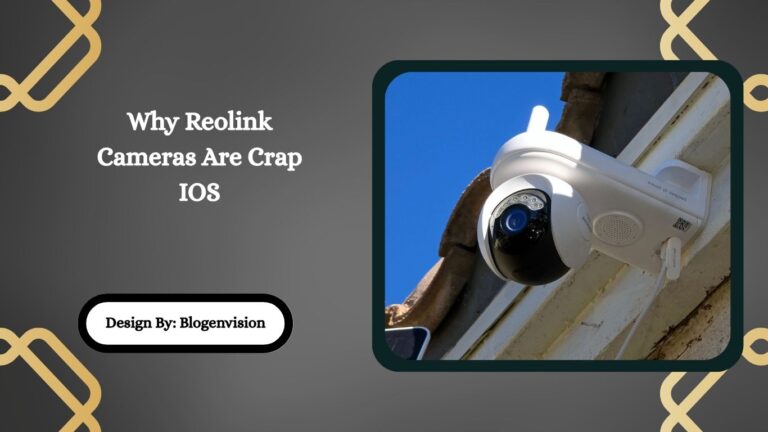What Is A Good Trail Camera – Choosing the Best One!
A good trail camera features fast trigger speed, high-resolution imaging, long battery life, reliable night vision, and weatherproof design—ideal for hunting, wildlife monitoring, property surveillance, or research in outdoor environments.
A good trail camera is more than just a tool for outdoor photography—it’s a reliable companion for hunters, wildlife watchers, property owners, and even researchers. But with hundreds of models on the market, how do you know which one is worth your investment?
In this in-depth guide, we’ll explore what makes a trail camera good, what features to prioritize, and how different users—hunters, researchers, or homeowners—can choose the best trail camera for their specific needs.
What Is a Trail Camera?
A trail camera, also called a game camera, is a motion-activated outdoor camera designed to capture photos or videos of wildlife or human activity in remote areas. These cameras are typically mounted on trees or poles and left unattended for long periods.
Key Features of a Good Trail Camera

Let’s break down the essential components that separate the best trail cameras from mediocre ones.
1. Trigger Speed
- A good trail camera has a trigger speed of 0.2 to 0.5 seconds.
- Faster speeds ensure you don’t miss quick-moving animals or trespassers.
2. Detection Range
- High-end trail cameras offer detection ranges of up to 100 feet.
- Look for cameras with adjustable PIR sensors to improve accuracy and reduce false triggers.
3. Photo and Video Resolution
- Minimum photo resolution should be 12MP, but 20MP to 30MP is ideal for clarity.
- Video resolution should be at least 1080p, with 4K trail cameras now becoming more affordable.
4. Night Vision Capability
- Good trail cameras use no-glow or low-glow infrared LEDs to capture images in total darkness without disturbing wildlife.
- Look for cameras with longer infrared flash ranges and clear nighttime image quality.
5. Battery Life
- Top-tier trail cameras run 6–12 months on a single set of AA lithium batteries.
- Solar-powered options are increasingly popular for long-term outdoor use.
6. Memory and Storage
- Ensure your camera supports SD cards up to 512GB.
- Some cameras offer loop recording, automatically overwriting old footage when full.
7. Weatherproofing
- A good trail camera must be IP65 or higher rated, ensuring it withstands rain, snow, dust, and extreme temperatures.
Cellular vs. Standard Trail Cameras
◼️ Cellular Trail Cameras
- Use 4G LTE networks to send images/videos directly to your phone or cloud.
- Require data plans, but they offer real-time alerts, ideal for security or monitoring remote game trails.
◼️ Non-Cellular (Standard) Cameras
- Store data locally on an SD card.
- More affordable, with longer battery life and no recurring costs.
Top Use Cases for Trail Cameras
| Use Case | Key Feature to Prioritize |
| Hunting | Fast trigger speed, wide detection |
| Wildlife Watching | High image resolution, long battery life |
| Home Security | Cellular connectivity, motion alerts |
| Research Projects | Time-lapse mode, weatherproof design |
| Farm Monitoring | Night vision, large SD card support |
How to Choose the Best Trail Camera in 2025

Here are some key questions to ask before buying:
❓ What will you use it for?
- Hunting? Choose fast detection, long battery.
- Security? Go for cellular alerts.
- Wildlife photography? Focus on 4K resolution.
❓ How often can you check the camera?
- Remote areas need high-capacity storage and long battery.
- Backyard setups can go with smaller memory and faster access.
❓ Is stealth important?
- If you’re capturing skittish wildlife or avoiding theft, choose a no-glow infrared model that’s silent and discreet.
Bonus Features to Consider
- Time-Lapse Mode: Useful for observing plant growth or animal habits over time.
- Dual-Lens Systems: One for day, one for night—improves image quality in all light.
- Bluetooth/Wi-Fi: Lets you check footage without removing the SD card (good for nearby setups).
- Password Protection: Prevents unauthorized access to your footage.
Top 5 Trail Cameras in 2025
| Brand & Model | Key Features | Price Range |
| Spypoint Flex G-36 | LTE, GPS, 36MP, 0.3s trigger | $130–$150 |
| Browning Recon Force Elite HP5 | 4K video, dual-lens, 100ft detection | $170–$200 |
| Tactacam Reveal X Gen 2.0 | LTE, app alerts, 24MP, affordable | $120–$140 |
| Bushnell Core DS-4K | Dual sensors, 4K, no-glow IR | $180–$220 |
| GardePro E6 | Wi-Fi, 24MP, good budget option | $80–$100 |
Expert Tip: Where You Place It Matters More Than Specs
Even the best trail camera will fail to perform if poorly placed. For best results:
- Mount the camera 3 to 4 feet off the ground.
- Face the lens north or south to avoid false triggers from sun glare.
- Use mounting straps or lockboxes to prevent theft or tampering.
FAQs:
1. What is the ideal trigger speed for a trail camera?
A quality trail camera should have a trigger speed between 0.2 to 0.5 seconds. This ensures it captures fast-moving wildlife or intruders without delay, reducing the chance of missing critical moments.
2. Is a cellular trail camera worth the extra cost?
Cellular trail cameras are worth it if you need real-time alerts or can’t frequently check the device. They’re ideal for remote security or wildlife monitoring but do require a monthly data plan.
3. What’s the difference between low-glow and no-glow infrared?
Low-glow IR emits a faint red light, while no-glow IR is completely invisible. No-glow is better for stealth and won’t alert animals or humans during nighttime recording, especially in sensitive areas.
4. Can trail cameras handle extreme weather conditions?
Yes, high-quality trail cameras with IP65 or higher ratings are built to withstand rain, snow, dust, and temperatures as low as -20°C, making them reliable for year-round outdoor deployment.
5. How often should you check your trail camera?
If it’s non-cellular, check it every 2–4 weeks to replace batteries and swap SD cards. For cellular cameras, you can rely on app-based notifications and reduce the need for physical visits.
Conclusion:
A good trail camera balances performance, reliability, and convenience. Whether you’re a hunter, wildlife enthusiast, or property owner, choosing the right trail camera with fast triggers, high resolution, and solid night vision will greatly improve your results. Weather resistance and storage capacity further enhance its value in outdoor environments. Depending on your needs, cellular or standard models both offer specific advantages. With advancements in technology, 2025 is an excellent time to invest in a well-built, feature-rich trail camera.







